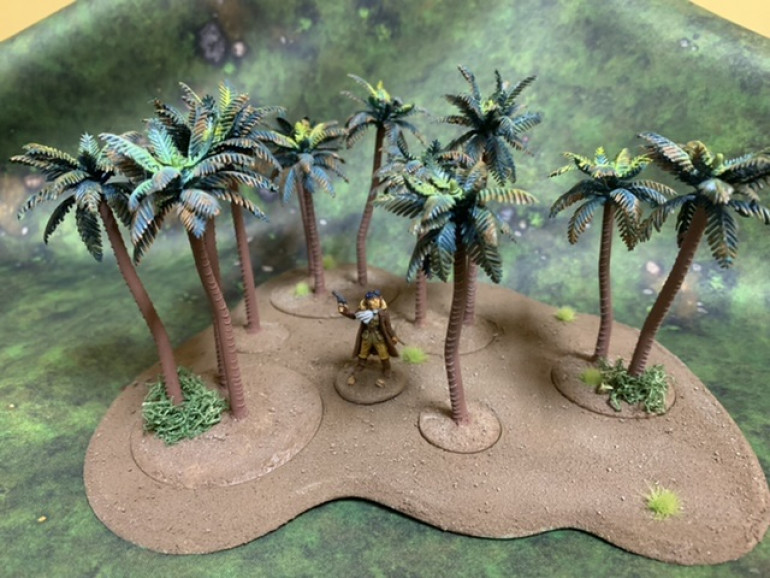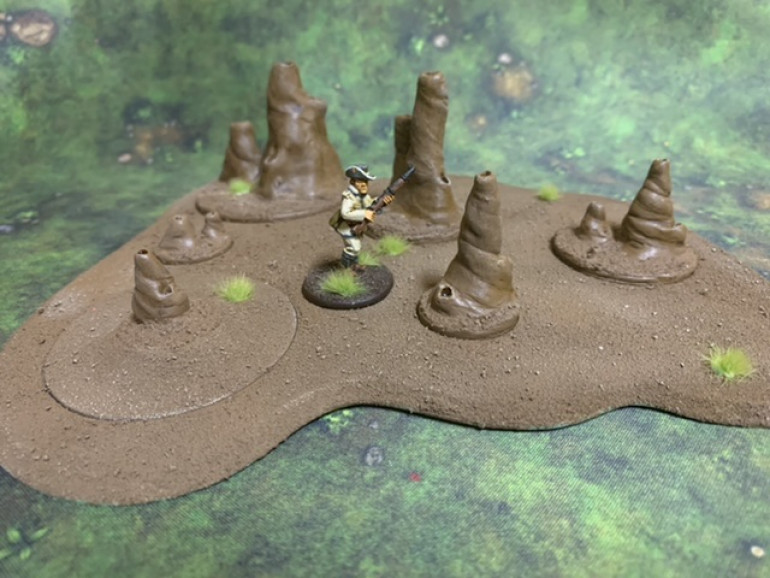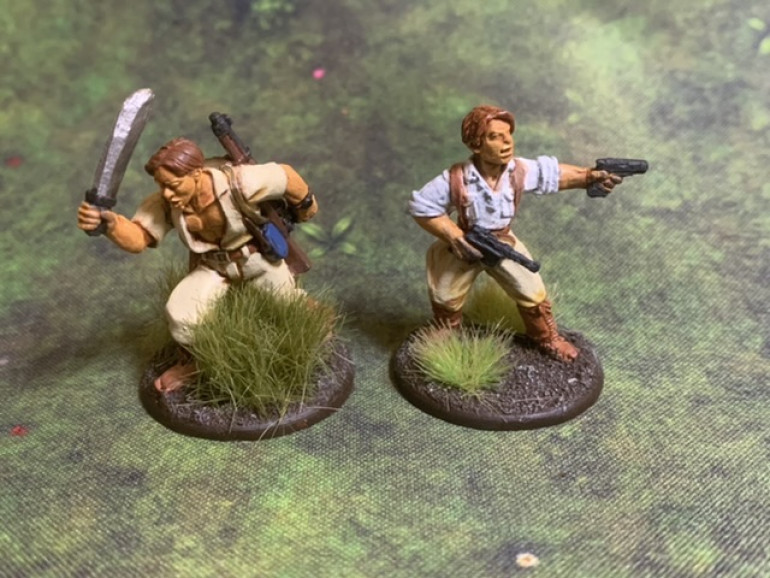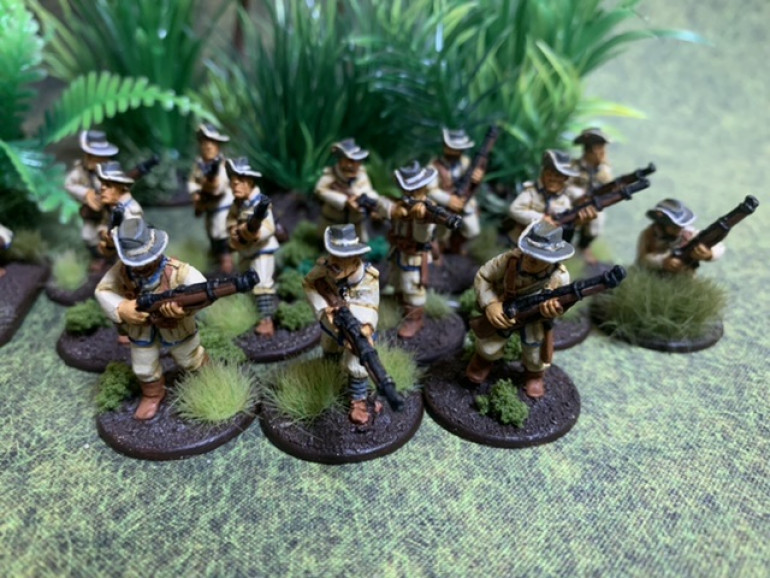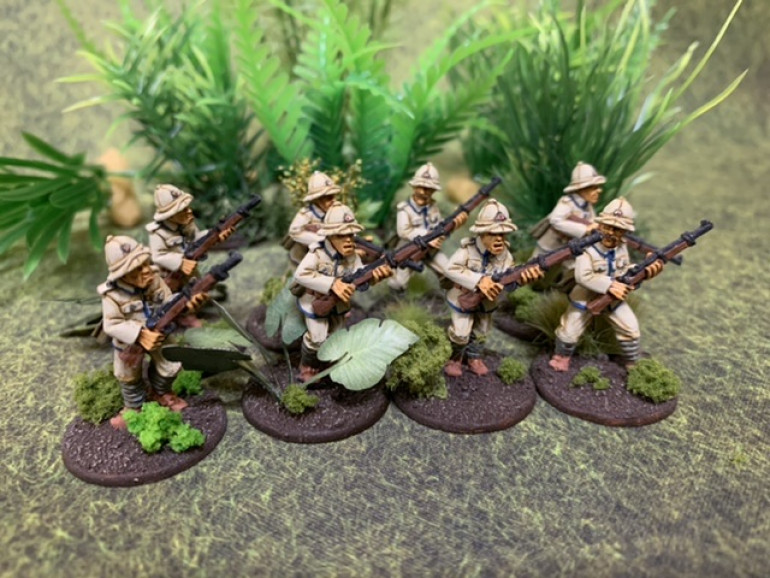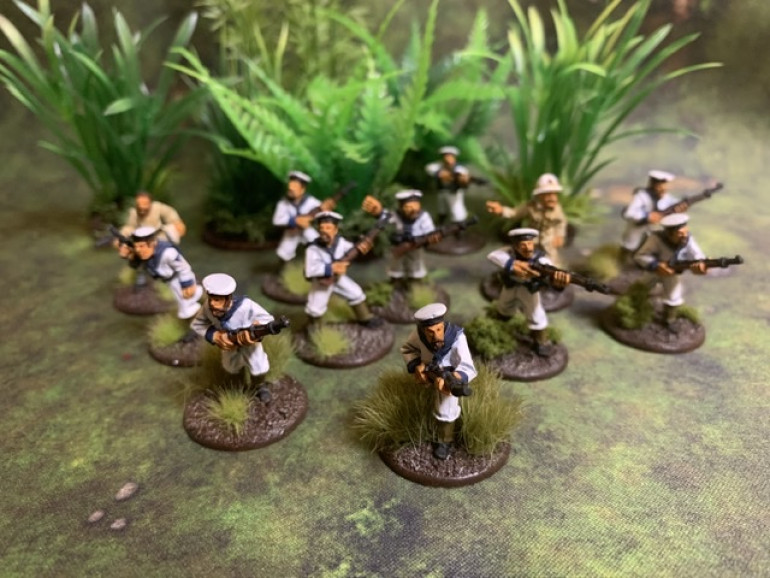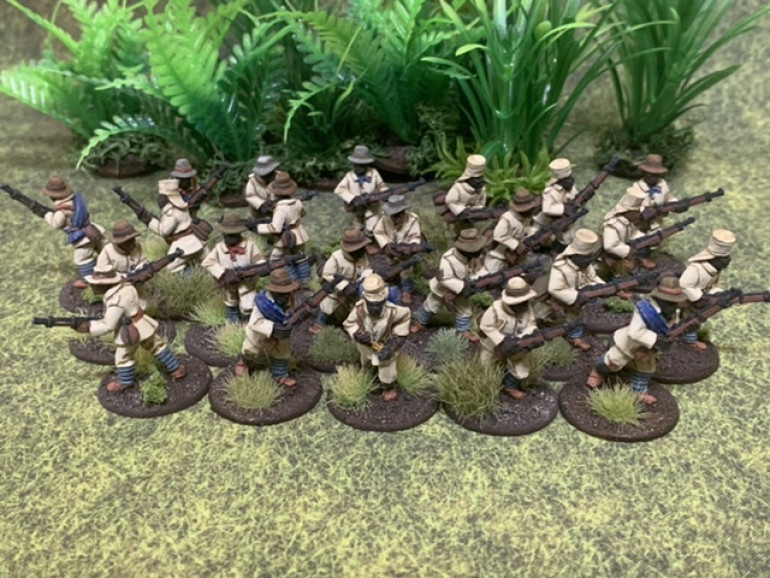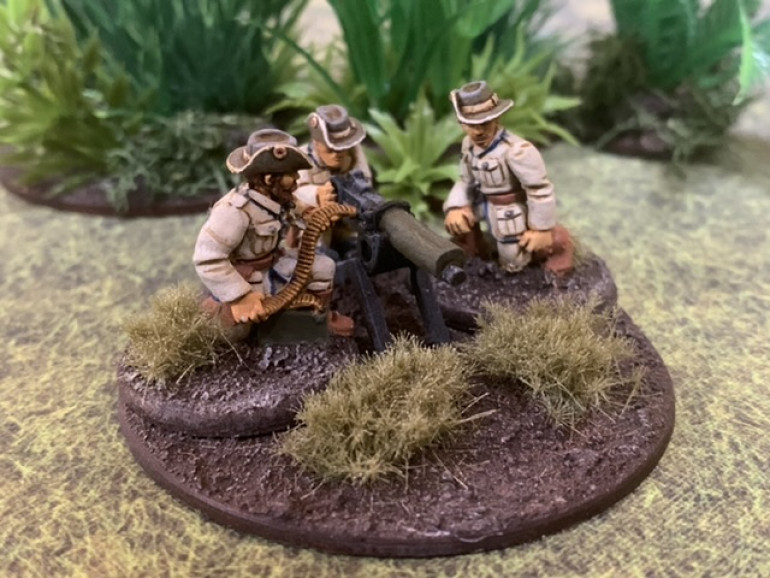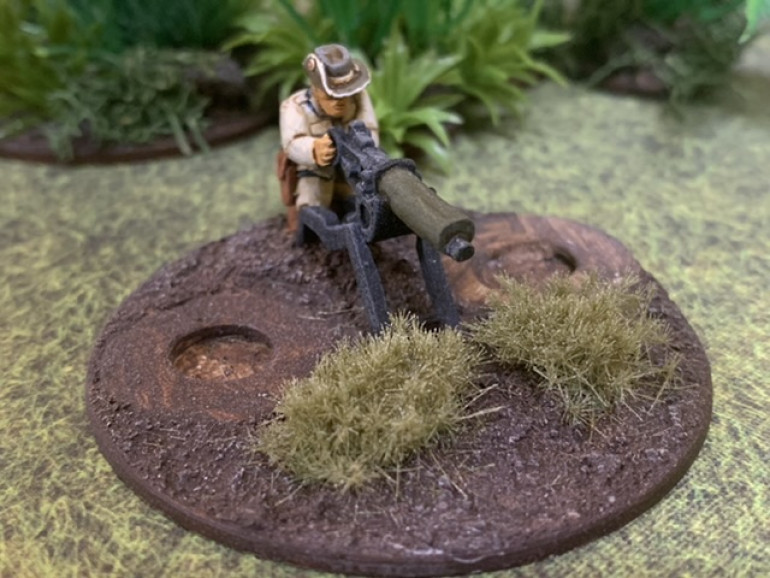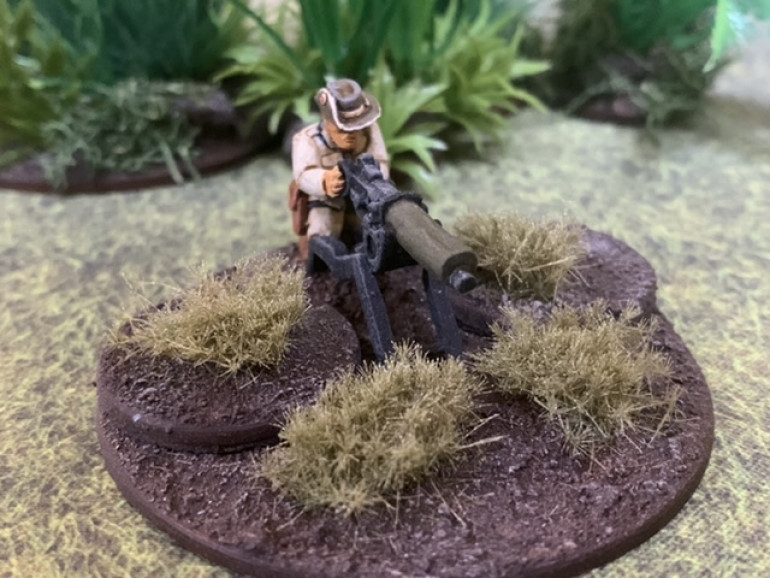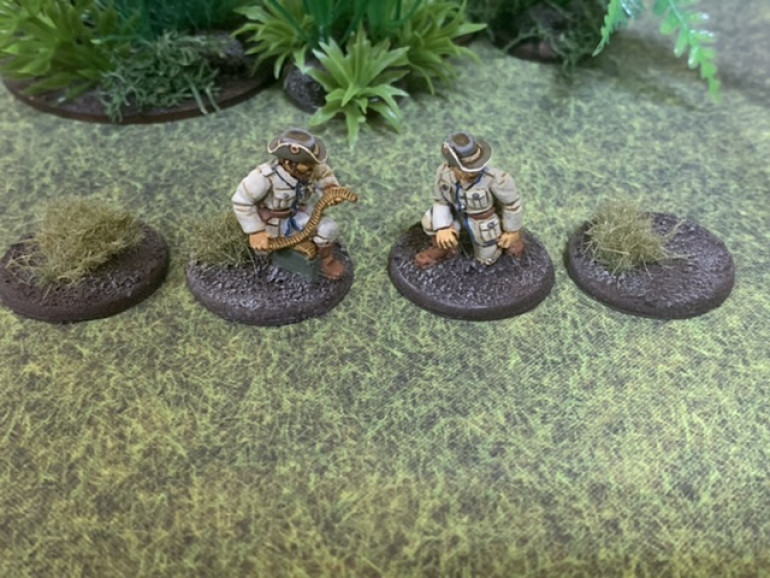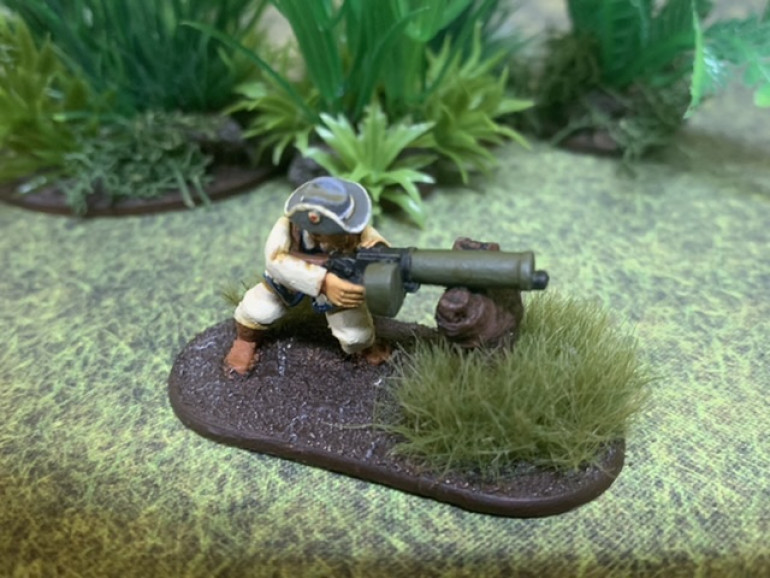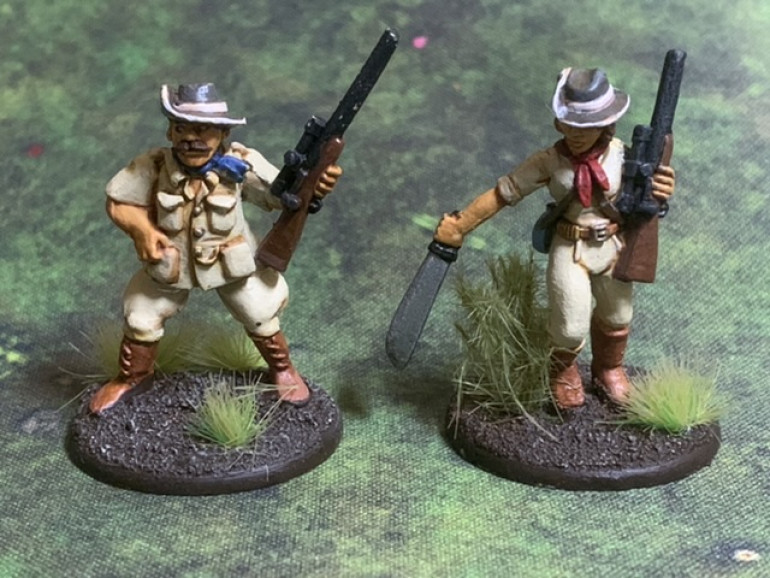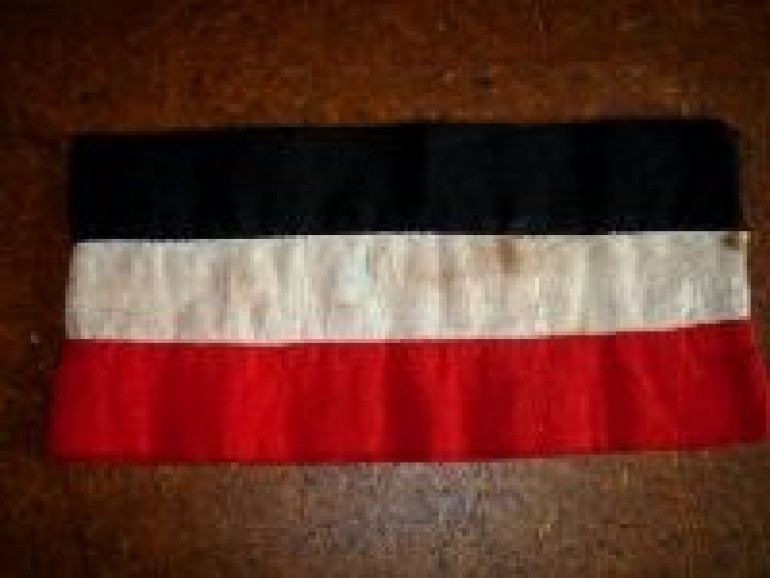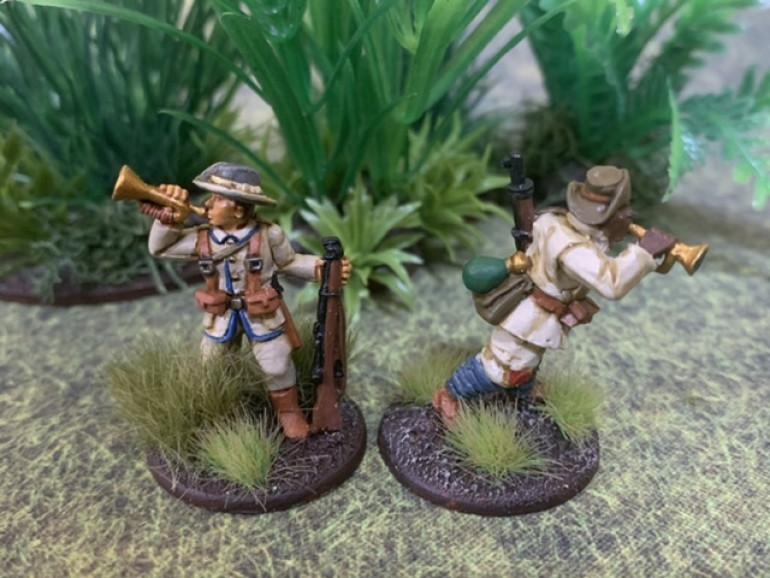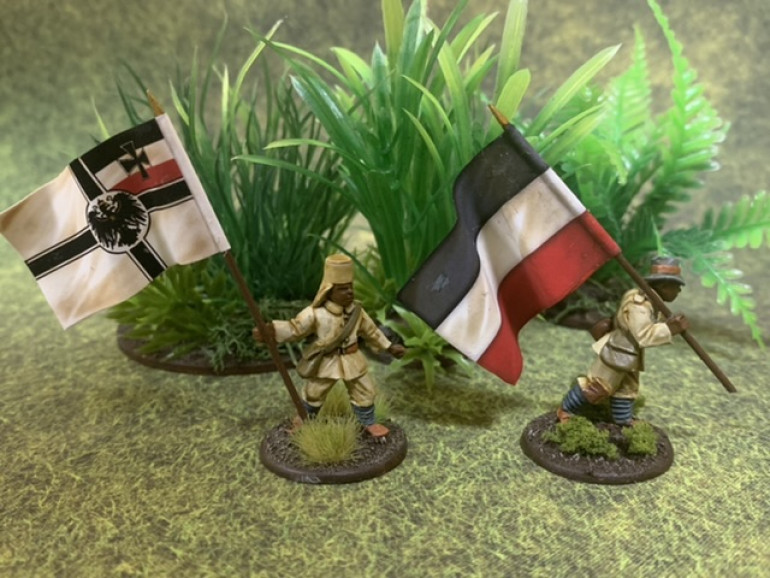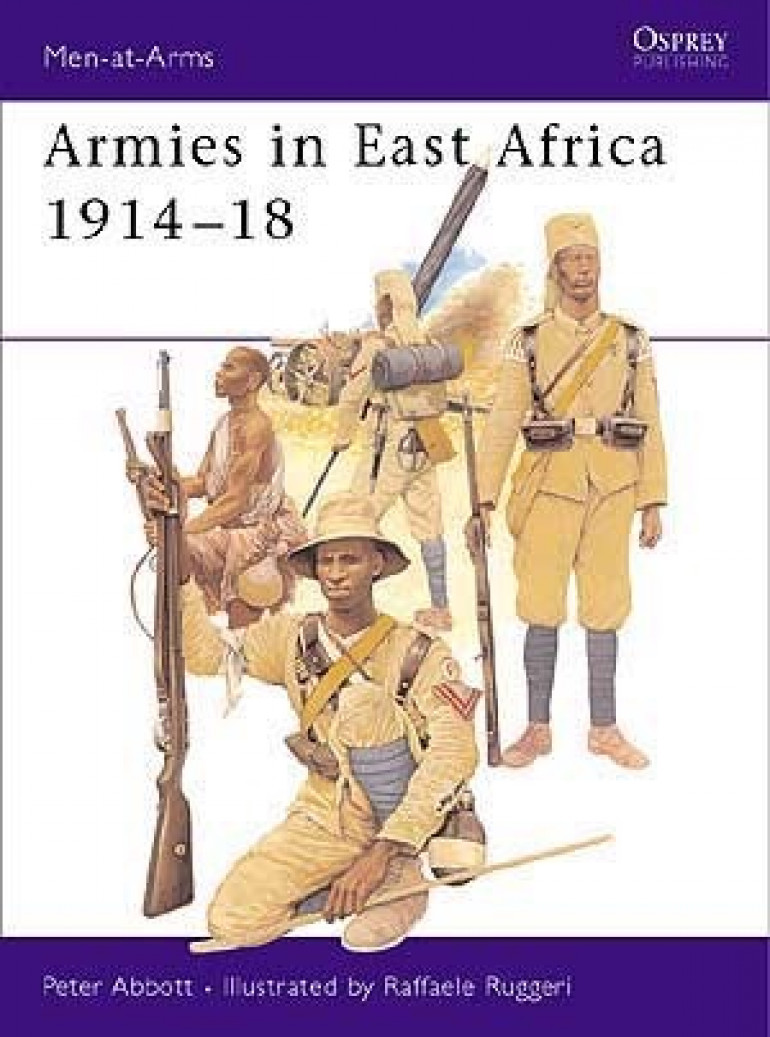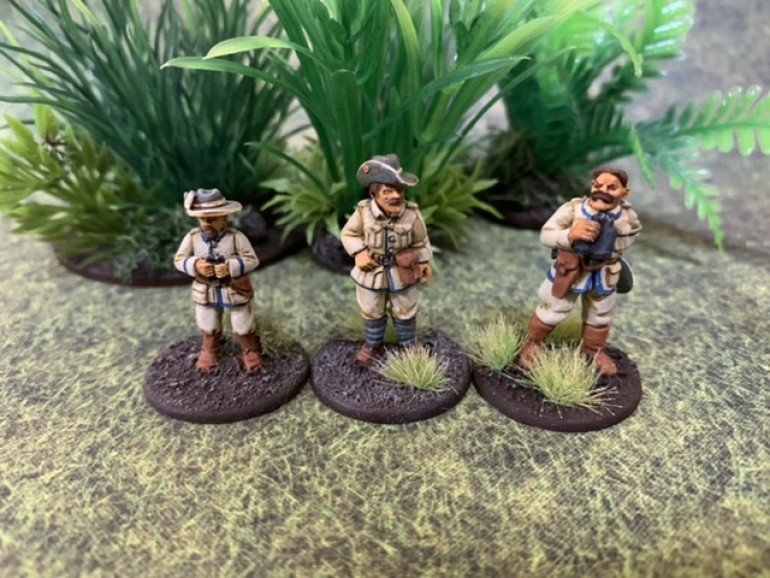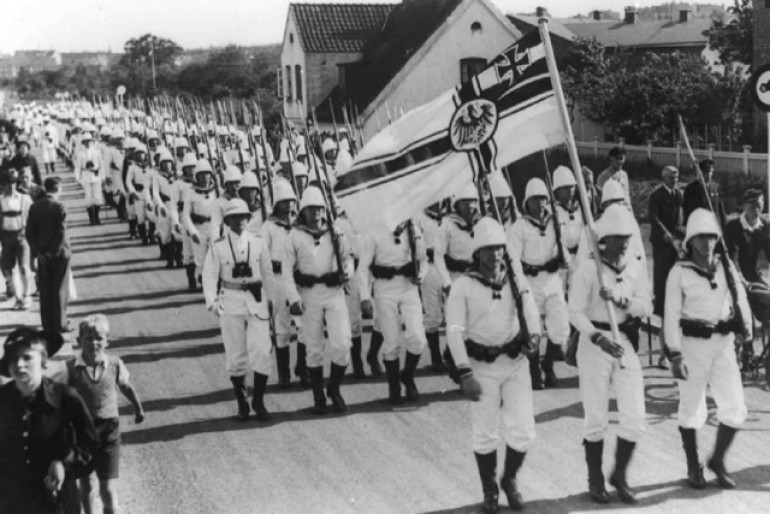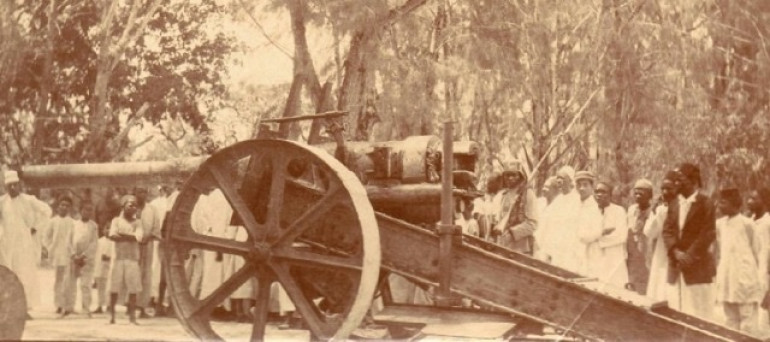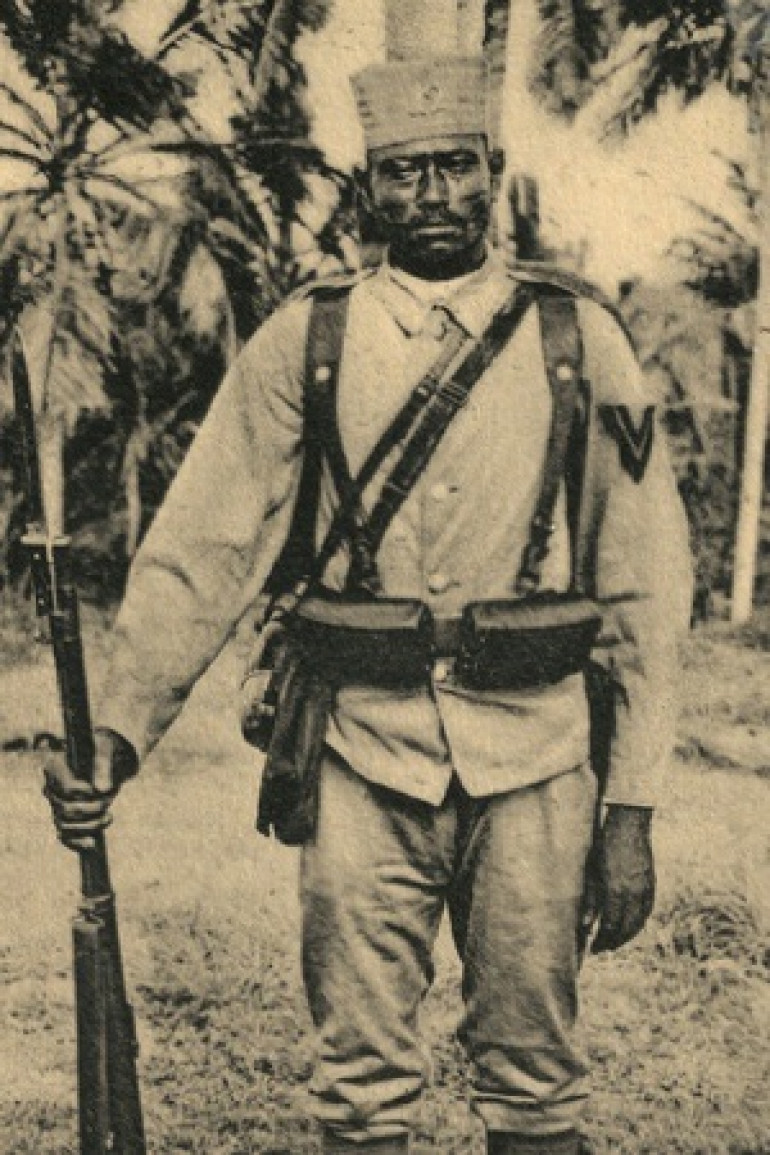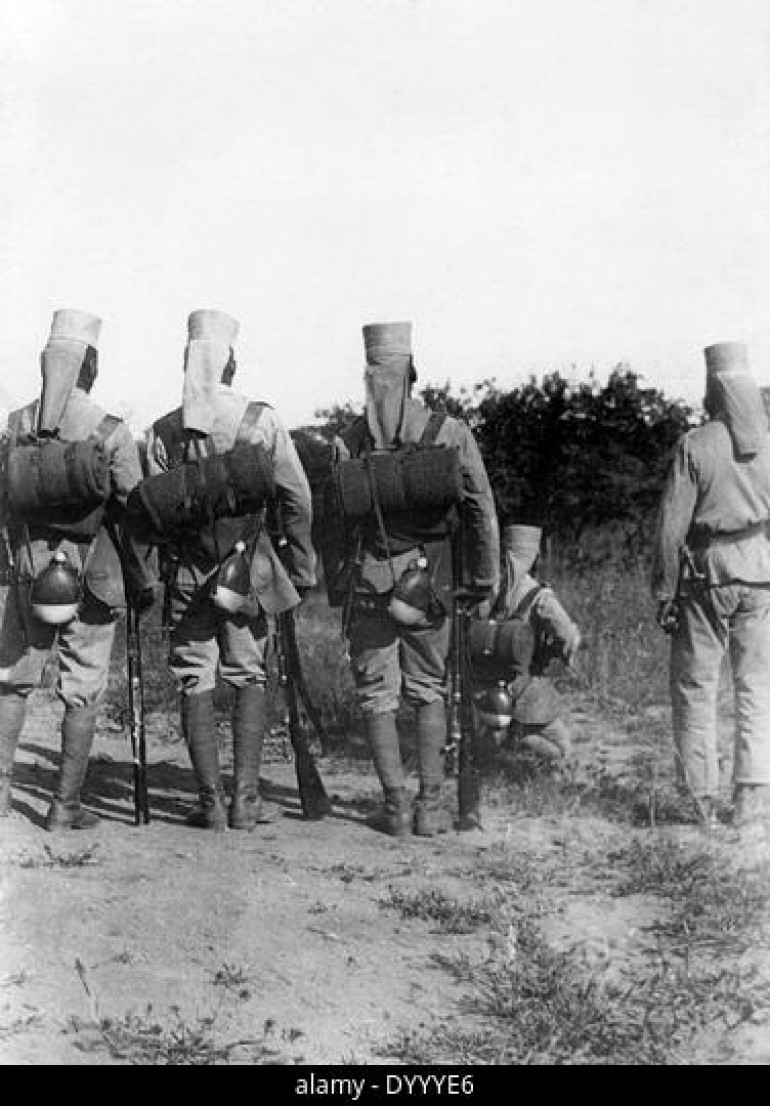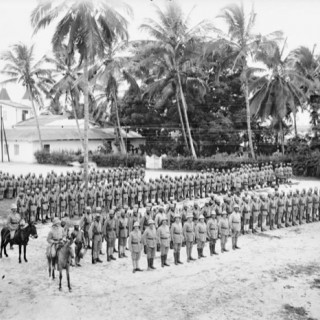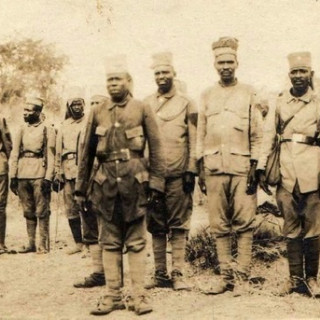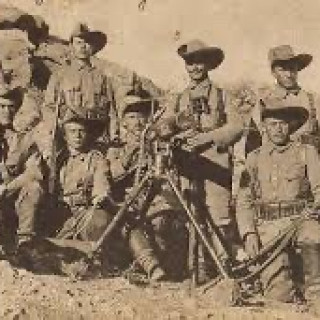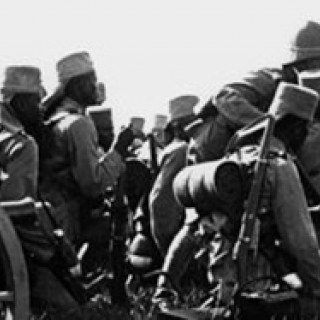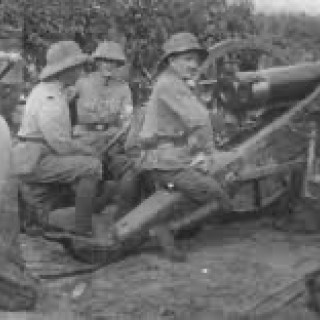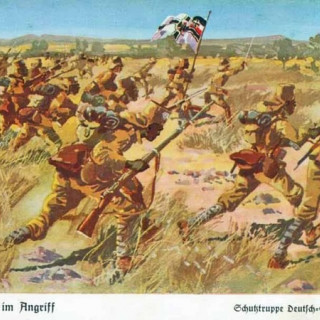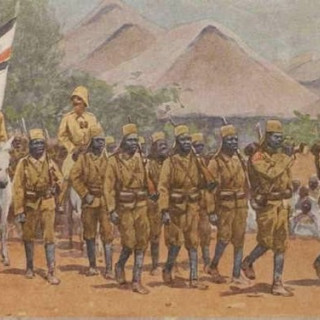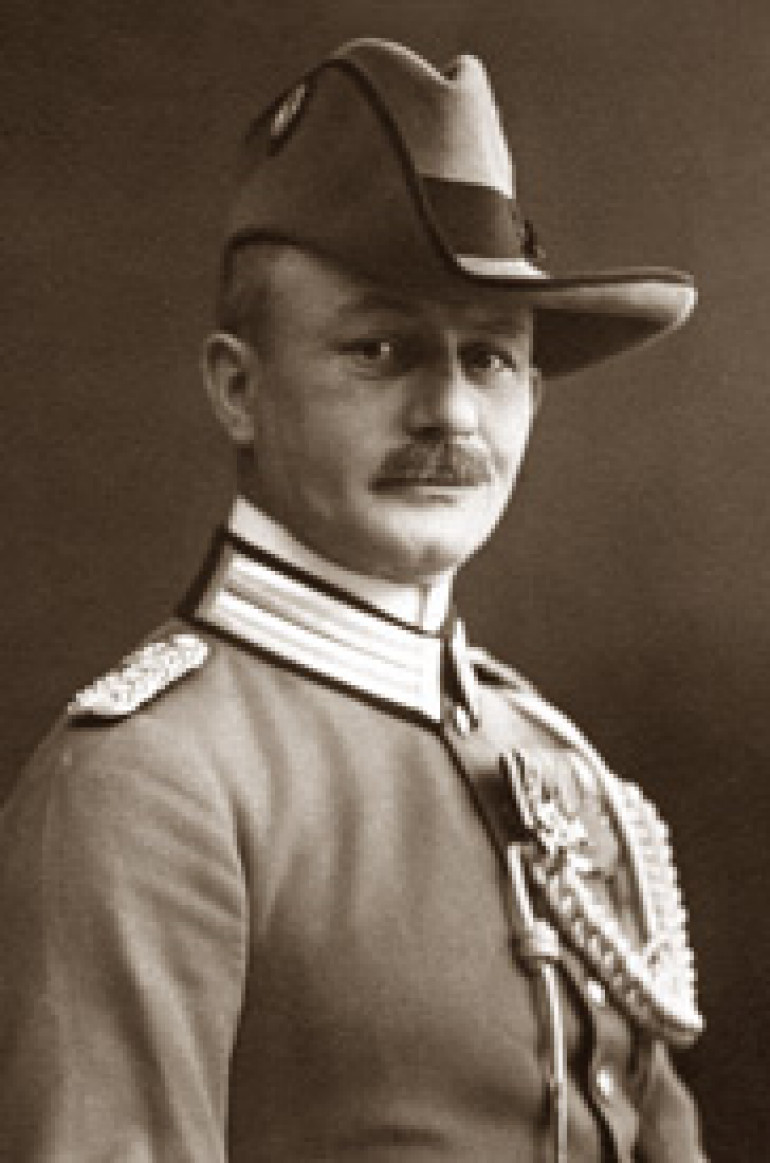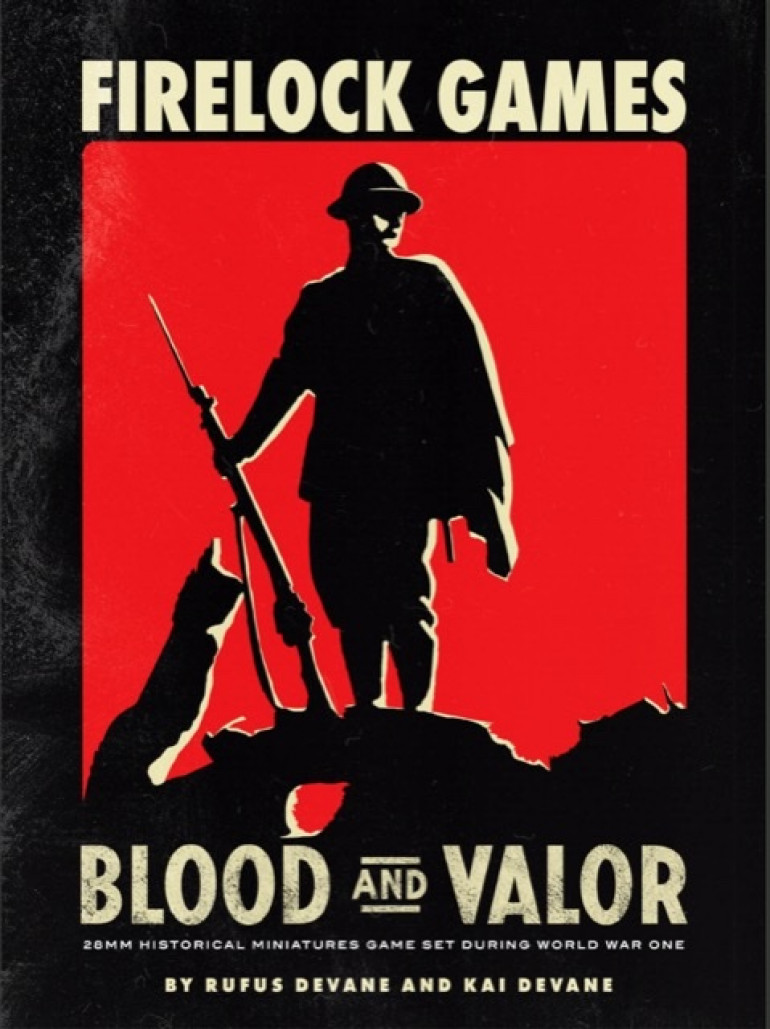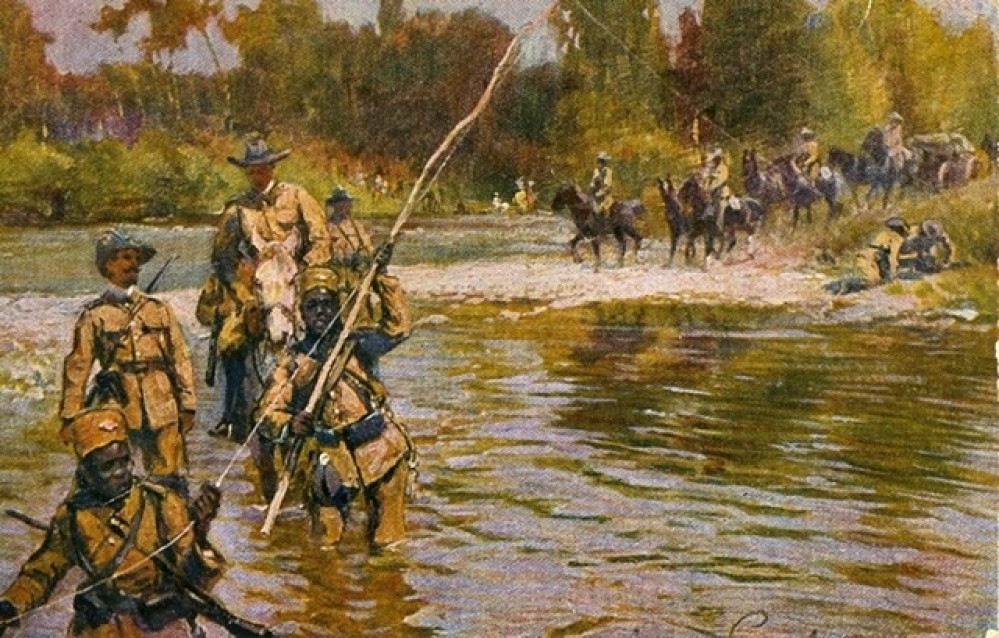
German East Africa
Recommendations: 472
About the Project
Let’s get obscure! Here I explore gaming in one of the lesser well known theaters of WW1.
Related Game: Blood & Valor
Related Company: Firelock Games
Related Genre: Historical
This Project is Active
Heia Safari!
Heia Safari is the title of a book published post-war by Lettow-Vorbeck about his time in East Africa. It’s also the title of a song first published in 1916. The phrase was originally Arabic that got translated into Swahili. It roughly translates as either Hurry or Hurray, a journey! It was spoken as a rallying cry/motivational phrase when the Schutztruppe broke camp.
Another version of the song appeared in WW2 and is about the Akrika Korps. Below is a video of the original lyrics sung in German but with English subtitles.
Palm Trees
I originally thought that palm trees were mostly in North Africa but I’ve learned that various species are scattered throughout Africa so, here we are! In game terms they’ll be treated as forests which makes them area terrain that blocks line of sight and provides light cover.
Termite Mounds
There’s quite a wide variety of terrain that can be included in an African campaign from jungles, to swamps to savanna’s, cities, towns, rivers, plucky little steam launches, Zeppelin’s….
Yes, Zeppelin’s. But more on that later.
Large termite mounds are one of the more interesting features to be found and for a short time Warlord Games sold resin termite mounds in partnership with Sarissa Precision MDF. In game terms we’ll probably treat this as area terrain that provides hard cover. May or may not be line of sight blocking. We’ll have to experiment with that.
Objective Markers
There are any number of scenarios that require objective markers and I have a few ideas for African themed scenarios and I figured these guys would come in handy. Painting the butterflies on the collector was a lot of fun.
The Jungle Jim’s
I saw these figures and had to include them somewhere. They’ll probably go in the Close Assault squad. In game terms it’s just a rifle squad with special rules. To represent it on the table I’ll probably make it a mixed squad of Germans and Askari.
Core Units
In game terms, core units are the command squad and the rifle squads. The three types of rifle squads are the Schutztruppe, the Askari and the Naval Landing Party squads. Each can have 4 to 12 men. Schutztruppe and Naval squads can take one light machine gun.
Heavy Machine Gun Teams
In game terms, you’re limited to two heavy machine gun teams. Each has three men. Since casualty removal is a thing, and I didn’t want to clutter up the table with more dice or counters, I decided to magnetize the figures and just remove figures as they are eliminated.
And because I didn’t want to look at the metal washers the magnets adhere to, I decided to make magnetized terrain replacements.
Light Machine Gun teams
It is true that the Schutztruppe had no light machine guns when the war started. It’s also true that the colony wasn’t supplied with any by Germany during the war. But the British forces were. And capturing and using those machine guns became a standard feature of the African campaign.
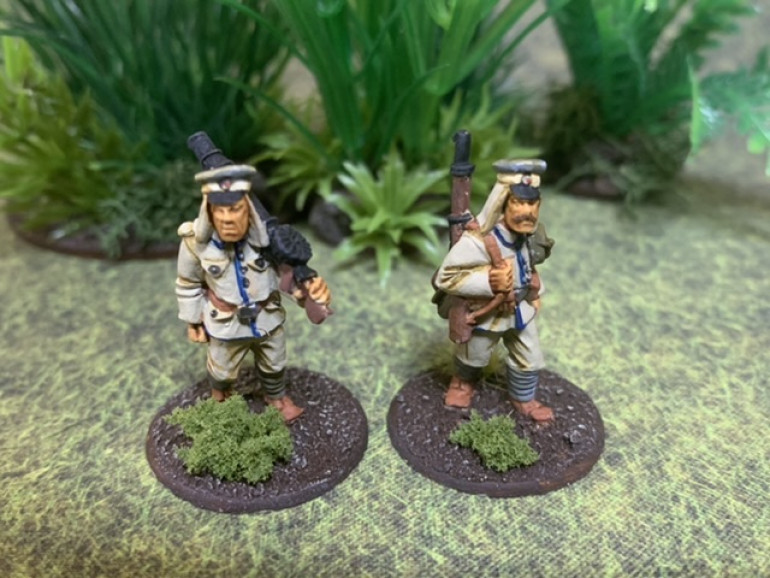 Asiankorps figures from Brigade Games sporting captured Lewis guns. Painted up as East African Schutztruppe. The uniforms are similar and the field caps virtually identical but in different colors.
Asiankorps figures from Brigade Games sporting captured Lewis guns. Painted up as East African Schutztruppe. The uniforms are similar and the field caps virtually identical but in different colors. 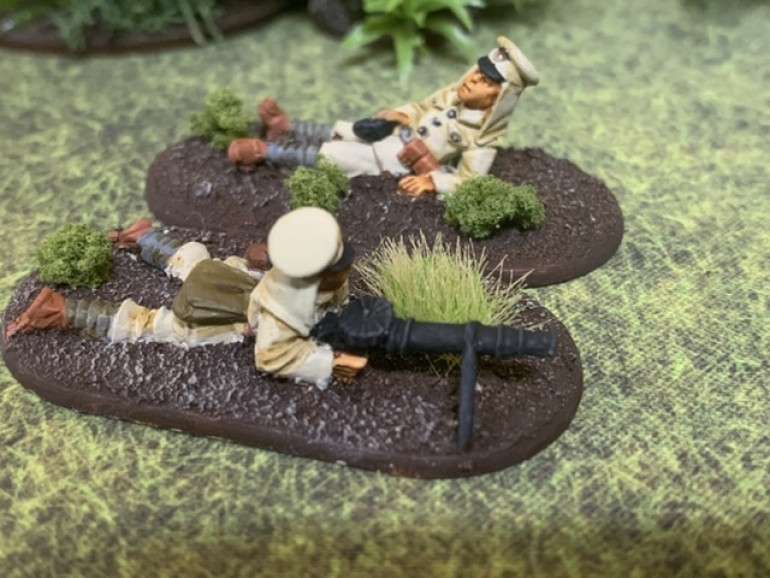 More figures from Brigade Games. In terms of game mechanics, there is just one figure that is added to a squad. But I like adding the assistant gunner as a bit of narrative. This team represents the LMG team of the Naval Landing Party. They’re in the uniforms of the Seebattalion, basically the German version of marines. While I have no information that any Seebattalion personnel were present on the SMS Koningsberg or in East Africa, it fits thematically and it amuses me so I did it.
More figures from Brigade Games. In terms of game mechanics, there is just one figure that is added to a squad. But I like adding the assistant gunner as a bit of narrative. This team represents the LMG team of the Naval Landing Party. They’re in the uniforms of the Seebattalion, basically the German version of marines. While I have no information that any Seebattalion personnel were present on the SMS Koningsberg or in East Africa, it fits thematically and it amuses me so I did it. Snipers
I couldn’t find any specific sniper models so I had to get creative. I found these two big game hunters in the Pulp Figures range. The fact that they have upturned hats just like the Schutztruppe was the deciding factor.
In doing some research I found out that the reserve companies that got called up were formed around shooting clubs. So my bit of historical fiction is that the older sniper had a daughter that were both members of the club and they both joined up to defend the colony. While sporting some civilian gear, they tried to equip themselves as much as possible with standard military uniforms and equipment.
I also learned that the reservists frequently didn’t have any uniforms or only had partial uniforms, so they wore black, white and red colored arm bands to mark themselves as legitimate combatants.
Command Squads
The command unit is made up of one officer armed with a pistol and two riflemen. Here’s a variety of officers that can be used in the command squad.
 Two Schutztruppe officers, one in the classic Sudwester, the other in the more common tropical helmet. Both figures by Brigade Games
Two Schutztruppe officers, one in the classic Sudwester, the other in the more common tropical helmet. Both figures by Brigade Games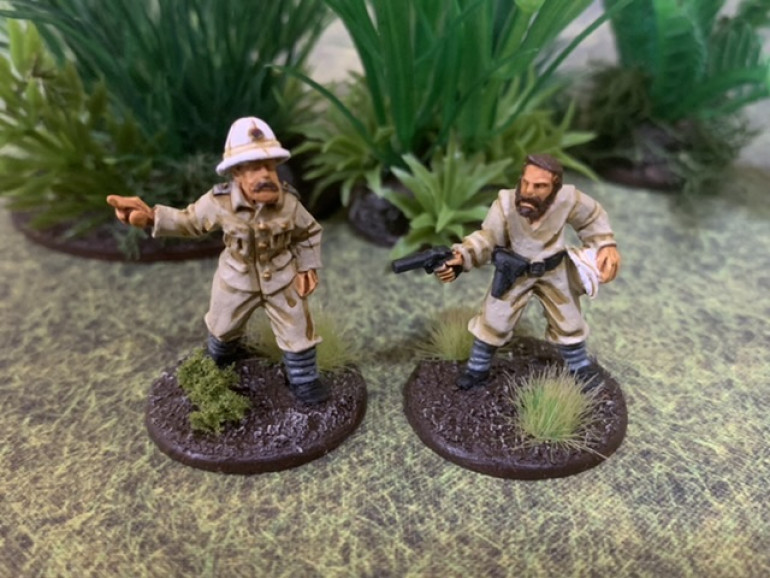 Two naval officers in the khaki tropical uniform. They’d be officers from the SMS Koningsberg after she’d been scuttled and the crew had joined the Schutztruppe. Both sport the tropical helmet but in white. As the war progressed they would probably be dyed khaki. Both figures by Brigade Games.
Two naval officers in the khaki tropical uniform. They’d be officers from the SMS Koningsberg after she’d been scuttled and the crew had joined the Schutztruppe. Both sport the tropical helmet but in white. As the war progressed they would probably be dyed khaki. Both figures by Brigade Games. While the remaining two members of the command squad are riflemen, here’s some buglers and flag bearers. While the core book doesn’t have rules for them, the next supplement to Blood and Valor will allow you to add either a flag bearer or a bugler.
It’s all about the hats.
The iconic image of the Schutztruppe was a jaunty khaki uniform topped off by the turned up hat known as the Sudwester. Seen frequently in pre-war portraits and post war veterans organizations, it wasn’t worn that often during the campaign. Nevertheless, the majority of my force sports them because let’s face, they’re cool.
Much more common in period photos is the tropical helmet. The high peak was supposed to allow air to circulate via air vents in the sides while also providing protection from the sun.
The field cap had mostly been replaced by 1914 but a very view photos show them being worn.
 The issue hat of the Askari was called the tarbush and is seen on the left. The figure on the right wears a scrounged up hat, probably civilian or handmade by the soldier himself. As the war progressed, uniforms were constantly modified or replaced by using captured uniforms or civilian clothes.
The issue hat of the Askari was called the tarbush and is seen on the left. The figure on the right wears a scrounged up hat, probably civilian or handmade by the soldier himself. As the war progressed, uniforms were constantly modified or replaced by using captured uniforms or civilian clothes. 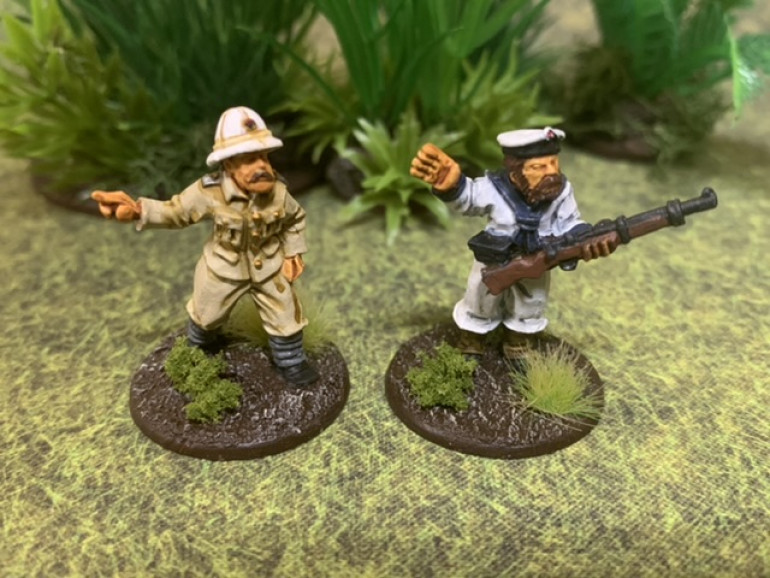 A German naval officer on the left in a white tropical hat and khaki landing party uniform while on the right, an enlisted sailor in the tropical landing party uniform with naval cap. Why the officer’s uniform was issued in khaki and the enlisted sailor’s uniform was issued in white boggles the mind. The white uniforms and hats were quickly dyed to a khaki color. Most naval caps were also replaced by tropical helmets. Both figures are by Brigade Games.
A German naval officer on the left in a white tropical hat and khaki landing party uniform while on the right, an enlisted sailor in the tropical landing party uniform with naval cap. Why the officer’s uniform was issued in khaki and the enlisted sailor’s uniform was issued in white boggles the mind. The white uniforms and hats were quickly dyed to a khaki color. Most naval caps were also replaced by tropical helmets. Both figures are by Brigade Games. Resources
Researching historical uniforms and units is one of more challenging but also entertaining aspects of historical war gaming. One of the best resources for this campaign is the German Colonial Uniforms website.
Just absolutely choke full of useful information there are period photos, surviving examples of period uniforms, color illustrations and brief histories of numerous German colonial forces.
Choosing the miniatures
As there is currently no official Blood and Valor range for the German East Africa force, I had to pick and choose from a couple of different ranges. The three I looked most closely at were Askari Miniatures, Brigade Games and Pulp Figures, all in 28mm.
Blood and Valor uses a fairly straight forward unit organization. There’s a HQ consisting of an officer with a pistol and two riflemen. The rifle squads are the core of the force and the three rifle squads are Schutztruppe, Askari and Sailors. Schutztruppe and Salior squads can have a single light machine gun attached. You can add heavy machine gun teams consisting of three men or single snipers and a specialist close combat squad. That’s it. Nothing super difficult to find. Except …
No one makes a light machine gun for German East Africa Now, some people will say they weren’t used and it’s true, the Germans had none at the start of the war. But more on this later.
All three ranges can give you the Schutztruppe HQ and heavy machine gun teams. However Pulp Figures has no Askari or German sailors. They do have Seebattalion but those are specialist Marine equivalents and there was no large formation present in East Africa. Now, I do fudge things a bit and include a few individuals, but no formations. The Pulp Figures Schutztruppe all wear high leather boots which were worn but were not that common.
Brigade Games can cover all the core units and has several uniform variations so you can have some variety. One of the best things they have is a Schutztruppe MG team, an Askari MG team and a Naval MG team. You could buy all three and mix and match your teams. All figures are in the low cut boots and putees common to the period.
Askari Miniatures has all of the above plus light field guns, cavalry and camels! Cavalry wasn’t present in large numbers in East Africa but Southwest Africa had a large cavalry force and some troops mounted on imported camels. There were a small number of mounted troops in East Africa but not a lot and mostly only played a mounted infantry role in the early part of the campaign.
The big difference between the ranges is the scale. All three advertise themselves as 28mm. And they are.
But it depends on how you measure them.
Brigade Games and Pulp Figures measure 28mm from foot to eye. Askari miniatures measures 25mm foot to eye. If you measure to top of head, then you get 28mm. You could make an argument that the difference is minimal and just reflects normal human variations but everything is scaled to the figure so weapons, canteens, bread bags, etc look smaller compared to figures from the other two ranges.
Ulitmately I limited myself to Brigade Games and Pulp Figures
Naval Landing Party
When the light cruiser SMS Koningsberg was scuttled her crew joined the Schutztruppe as both artillery men using the big guns removed from the cruiser as well as infantry.
Askari
Schutztruppe
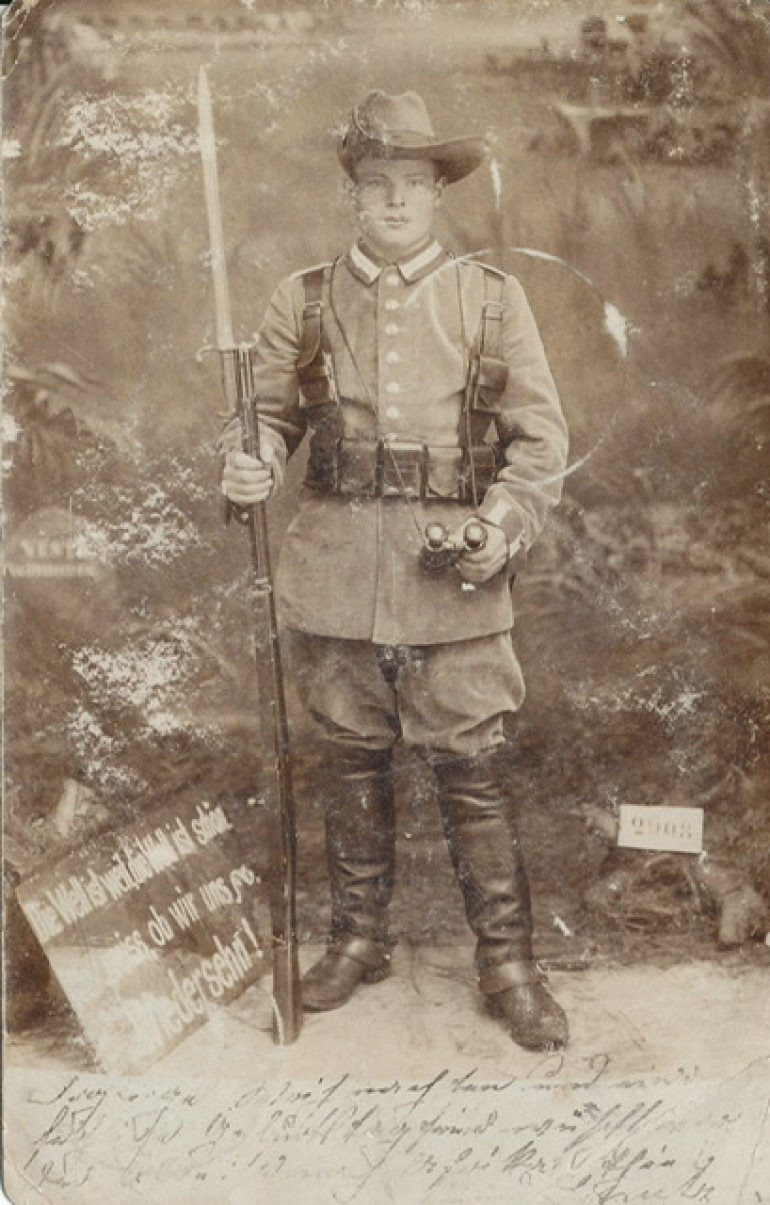 A pre-war image of a German Schutztruppe in the “home” uniform. This grey uniform was mostly only worn in Germany, for portraits or formal events.
A pre-war image of a German Schutztruppe in the “home” uniform. This grey uniform was mostly only worn in Germany, for portraits or formal events. 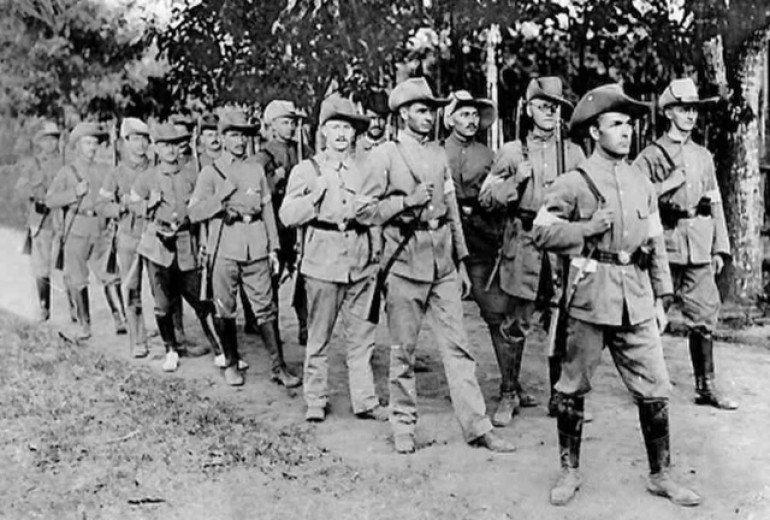 Here is the more practical khaki field uniform. This photo is of Schutztruppe of the German Southwest African colony. The uniforms were the same but the trim on the hat was in different colors to denote which colony the wearer was assigned to. White trim was the assigned color for East Africa. Blue for Southwest Africa.
Here is the more practical khaki field uniform. This photo is of Schutztruppe of the German Southwest African colony. The uniforms were the same but the trim on the hat was in different colors to denote which colony the wearer was assigned to. White trim was the assigned color for East Africa. Blue for Southwest Africa. The Schutztruppe
Each German colony had its own Schutztruppe and while independent from each other, their activities were coordinated by the Schutztruppe staff officers assigned to the German general staff. However, in practice, each colony was largely on it’s own once the war started.
The East African force started with 14 Feldkompanien of roughly 160 to 200 men under arms. An additional 250 man contingent of unarmed porters was assigned to each company. As the war progressed, this was expanded to a total of 30 companies plus another 8 Schutzenkompagnies (rifle companies) made up of white settlers, hunting and rifle clubs, plantation managers or trading company employees.
The prewar units were mixed race units of roughly one European soldier to eight African soldiers known as Askari, an Arabic word meaning soldier. Each company also had machine gun teams attached. There was a limited amount of light artillery available. While German soldiers had a version of the 1898 Mauser, the Askari were mostly armed with 1871 Mausers, a single shot rifle firing a black powder cartridge that created huge plumes of smoke.
How it got started
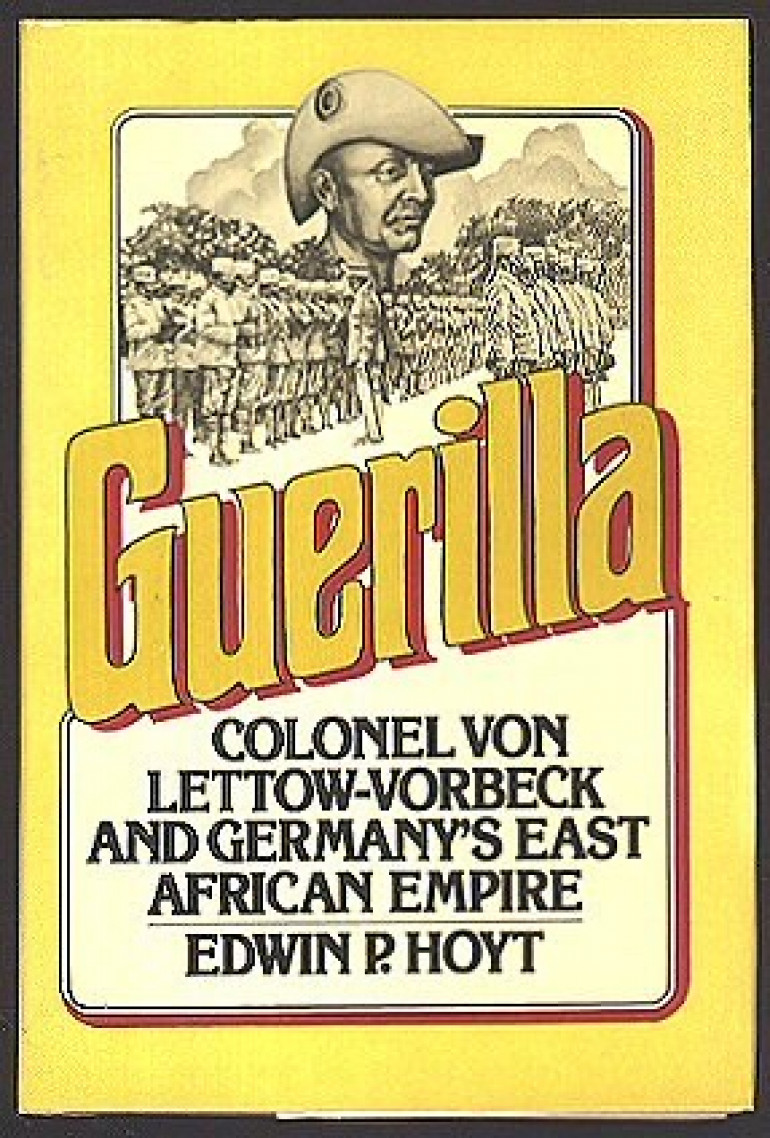 I first read this book back in the 80s. This fascinating account of the East African campaign served as the spark for this project.
I first read this book back in the 80s. This fascinating account of the East African campaign served as the spark for this project. Lettow-Vorbeck was the commander of the German East Africa Schutztruppe (translates roughly as “protection force”) from 1914 to 1918. Even though the entirety of German East Africa was occupied by the Allied powers, and being outnumbered by a factor of 21 to 1, he remained undefeated throughout the war and carried out the only successful incursion onto British territory of the war. He surrendered after the armistice because he didn’t know the war was over and had to have news of the armistice to be confirmed by the British. His success in tying down some 300,000 allied troops is largely due to his use of guerrilla warfare. He is sometimes referred to as the first guerrilla but at the time was called The Lion of Africa.
The Great War YouTube channel is an absolutely fascinating and monumental work covering the First World War in one week segments, for the entire four years of the war. There are also specials on various personalities, weapons and tours of historic locations. Even just casually interested viewer’s will find themselves watching just more and more videos. Well worth checking out.









































